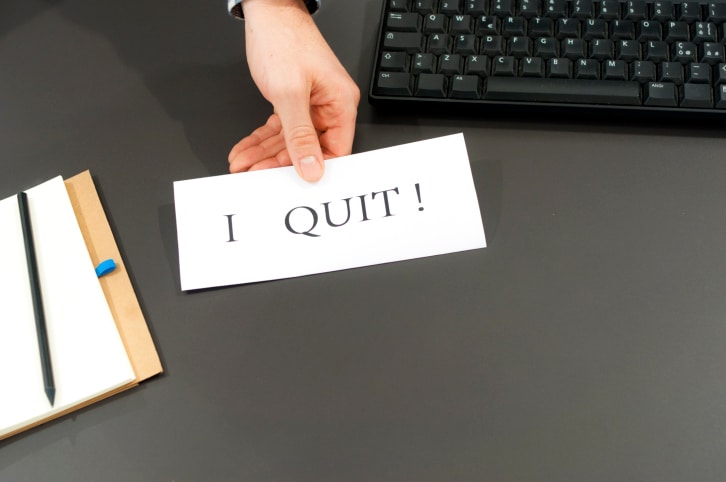How Can I Protect Myself from a Hostile Work Environment?
Having to face the challenge of going to work each day in a hostile work environment can take a toll on you. Your work product, health and personal relationships can suffer when you are the target of harassment at work. You shouldn’t have to worry about jokes, slurs, touching and other unwanted conduct on top of your job duties. So how can you protect yourself from a hostile environment at work? Fundamentally, you should know that it’s your employer’s responsibility to create and maintain a workplace free from harassment, and it should never be considered the victim’s responsibility to avoid illegal harassment. However, there are some steps we recommend that can empower you to minimize the chance of a hostile work environment, and even if one exists, that will help you deal with it quickly and effectively.
If you’d like to talk with someone about your own hostile work environment claim, contact Eisenberg & Baum. We have a group of very experienced employment discrimination attorneys who can help you understand your claim and advise you of your rights under the law.
Know Your Rights
The first step to protection as an employee is knowing your rights under the law. We’ve spent a lot of time on our blog talking about employment discrimination and the idea of the hostile work environment. A “hostile work environment” is a specific type of employment discrimination claim under federal and state law, and it is created when you experience unwelcome conduct that is so severe or pervasive it affects the terms of your employment. We commonly think of a hostile work environment in terms of sexual harassment in which co-workers or supervisors subjecting an employee to repeated unwanted sexual conduct, including inappropriate comments, pictures and touching. However, a hostile work environment can be based on a number of different legally protected characteristics, not just gender.
 Under federal law, employees are protected from discrimination based on their race, color, national origin, gender, pregnancy, age, religion, disability, and genetic information. State and local laws in your area can protect you based on additional characteristics. For example, in New York City employers are prohibited from discriminating against an employee on similar grounds as recognized under federal law as well as sexual orientation, marital status, gender identity, arrest and conviction record, military status or service, observance of Sabbath, political activities, unemployment status, and status as a victim of domestic violence. To learn more about hostile work environments, read our prior post on “What Is a Hostile Work Environment.”
Under federal law, employees are protected from discrimination based on their race, color, national origin, gender, pregnancy, age, religion, disability, and genetic information. State and local laws in your area can protect you based on additional characteristics. For example, in New York City employers are prohibited from discriminating against an employee on similar grounds as recognized under federal law as well as sexual orientation, marital status, gender identity, arrest and conviction record, military status or service, observance of Sabbath, political activities, unemployment status, and status as a victim of domestic violence. To learn more about hostile work environments, read our prior post on “What Is a Hostile Work Environment.”
Discrimination Policies and Training
One of the most common and easiest things an employer can do to help prevent discrimination in the workplace is to adopt a policy against discrimination and a thorough process for reporting and investigating claims of discrimination, then train employees and management on the subject. If you notice your employer does not have these policies and processes in place or what they do have does not sufficiently address workplace discrimination, we recommend you talk with your employer. A strong set of policies and training can help educate all employees about what is and is not appropriate conduct at work and reduce instances of harassment and discrimination. Having an explicit procedure for reporting and investigating discrimination claims encourages victims to speak up when they have a complaint and can show that the employer takes such complaints seriously and responds with action when needed. When you contribute to a better set of policies and procedures at work, you not only help yourself but your co-workers, managers and employer. Try talking with your supervisor or if you’re uncomfortable talking with your supervisor, try another member of management or a human resources team member.
Confront, Report and Document
If you are already experiencing harassing behavior that is disrupting your ability work, it’s time to take action. If you’re comfortable with the idea, let the harasser or harassers know clearly and directly that you want them to stop what they’re doing. Whether it’s a supervisor who is belittling you because of your age or a group of co-workers who like to share stories about their sexual experiences in the open, let them know that their behavior is making you uncomfortable and you want them to stop. If you are afraid to confront your harasser directly, maybe because they’ve physically threatened you, then we encourage you to talk with your supervisor or human resources contact. Even if you’re not directly affected by harassing conduct at work, if you witness it, say something. This is your chance to help change the culture at your job. By reporting harassing conduct at work, you can protect the victim and everybody else at work, including yourself, from future harassment.
In addition to reporting any instances of harassment, there are other steps you can take at work to protect yourself when you’re in the midst of a hostile work environment. You can start making sure that your story is heard and supported by having co-workers around you when you encounter your harasser. Your harasser might be less bold around other people, and if they’re not, you will at least have witnesses to their conduct. Also, you can begin taking notes of your interactions with your harasser. Make sure you’re as detailed as possible in describing when, where and how your encounters with your harasser happened, and take the notes as close as possible to each event so that your memory is still fresh. These notes can help in your employer’s investigation and in any future legal action you may have to take.
Finally, we don’t recommend retaliating against your harasser. This could cloud your employer’s investigation or a court’s determination of your original claim and potentially subject you to liability. Use the resources you have at work and under the law to report and stop the discriminatory conduct against you.
Contact an Attorney
If you find your employer isn’t appropriately responding to your complaints, contact an attorney. An experienced employment discrimination lawyer can help you get the resolution you need, whether that requires filing a charge with the Equal Employment Opportunity Commission or a lawsuit in federal or state court. A lawyer can help advise you of your legal rights and options as a victim of workplace discrimination. Eisenberg & Baum’s employment discrimination attorneys have decades of experience handling hostile work environment and other employment discrimination claims, and we encourage you to contact us for a free initial consultation. For employment discrimination and retaliation cases, we bill on a contingent fee basis, so you won’t have to pay us unless we win or settle your case.




 A group of six female former students of the University of Tennessee filed the case against the university in federal court last month. Two more former students have since joined the lawsuit. The primary basis for their lawsuit is that the university violated Title IX of the Education Amendments of 1972 (“Title IX”) by creating a hostile environment that allowed for multiple sexual assaults to occur and were indifferent and unreasonable in responding to sexual assault claims by victims.
A group of six female former students of the University of Tennessee filed the case against the university in federal court last month. Two more former students have since joined the lawsuit. The primary basis for their lawsuit is that the university violated Title IX of the Education Amendments of 1972 (“Title IX”) by creating a hostile environment that allowed for multiple sexual assaults to occur and were indifferent and unreasonable in responding to sexual assault claims by victims.
 Many Republican Senators have already indicated they would block any nominee sent to them by President Obama, so it’s highly likely the Court will stay at eight members until the next president takes office. If a Democrat were to win the election, the expectation is that they would appoint a more liberal judge to the Court. According to the
Many Republican Senators have already indicated they would block any nominee sent to them by President Obama, so it’s highly likely the Court will stay at eight members until the next president takes office. If a Democrat were to win the election, the expectation is that they would appoint a more liberal judge to the Court. According to the 


 Interaction between employees outside of the workplace is no longer confined to restaurants, bars and other events. When anti-discrimination laws were first enacted decades ago, lawmakers could not have envisioned the various methods of electronic communication being used today, from email and texting to Facebook and Twitter, people now have countless ways of staying in contact both during and outside of work. Though the law may not have been specifically designed with these newer forms communication in mind, courts have shown that the law can still be applied to them.
Interaction between employees outside of the workplace is no longer confined to restaurants, bars and other events. When anti-discrimination laws were first enacted decades ago, lawmakers could not have envisioned the various methods of electronic communication being used today, from email and texting to Facebook and Twitter, people now have countless ways of staying in contact both during and outside of work. Though the law may not have been specifically designed with these newer forms communication in mind, courts have shown that the law can still be applied to them.


 So what happens when your version of events conflicts with your harasser’s version? First, you should know that, just because your supervisor tells a different story, that does not mean your testimony won’t be considered by a court. Your testimony, as the alleged victim of sexual harassment, is often a crucial part of your case. The purpose of the courts and administrative bodies like the Equal Employment Opportunity Commission in handling disputes is often to decide between differing versions of events. The more support you can give for your version through other evidence, the more likely you will prevail in the dispute.
So what happens when your version of events conflicts with your harasser’s version? First, you should know that, just because your supervisor tells a different story, that does not mean your testimony won’t be considered by a court. Your testimony, as the alleged victim of sexual harassment, is often a crucial part of your case. The purpose of the courts and administrative bodies like the Equal Employment Opportunity Commission in handling disputes is often to decide between differing versions of events. The more support you can give for your version through other evidence, the more likely you will prevail in the dispute.